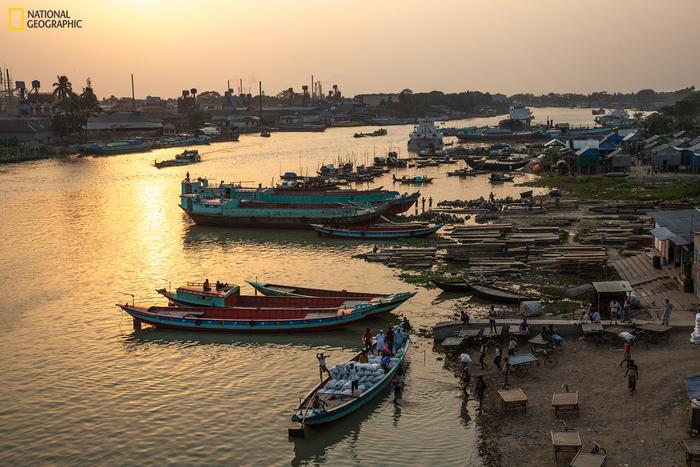Significant quantities of microplastic particles are being trapped in riverbed sediments or carried through the air along major river systems, a new study has shown.

Credit: Sara Hylton, National Geographic
Significant quantities of microplastic particles are being trapped in riverbed sediments or carried through the air along major river systems, a new study has shown.
The research, conducted along the length of the Ganges River in South Asia, found on average about 41 microplastic particles per square metre per day settled from the atmosphere. .
In addition, analysis by scientists found 57 particles per kilogram on average in sediment from the riverbed as well as one particle in every 20 litres of water.
The research, published in Science of the Total Environment, represents the first combined analysis of microplastics in water, sediment and air around a major river system.
It was conducted using samples collected by an international team of scientists as part of the National Geographic Society’s Sea to Source: Ganges expedition.
Lead author Dr Imogen Napper, a Research Fellow at the University of Plymouth and National Geographic Explorer, said: “We have known for some time that rivers are key pathways for the transfer of microplastics to marine environments. However, there has always been uncertainty about the sheer amounts being transported, and whether they represent long-term sinks. This study goes some way to unravelling that mystery, and revealing the true scale of microplastic contamination that our river systems can represent.”
The research involved scientists from: the University of Plymouth (UK); the Wildlife Institute of India (India); the University of Dhaka, WildTeam, and Isabella Foundation (Bangladesh); National Geographic Society, University of Georgia (USA); ZSL (Zoological Society of London), University of Exeter (UK); and Nantes Université (France).
Many of the same scientists were involved in a previous study, published in January 2021, which suggested the Ganges River and its tributaries could be responsible for up to 3 billion microplastic particles entering the Bay of Bengal every day.
In addition to highlighting the overall abundance of particles, for the new study scientists found fibres to be the most common type, representing up to 99% of the microplastics discovered in some of the samples analysed.
Within this, rayon (synthetically altered cellulose) was the dominant polymer – representing up to 82% of the fibres found in some samples – ahead of acrylic and polyester, and blue was the most common colour.
The sediment samples often contained denser microplastic particles than those found in water and air, and higher population densities correlated with increased microplastic abundance for air and water samples.
Writing in the study, scientists say they believe clothing is likely to be the prominent source of microplastics to this particular river system, influenced by atmospheric deposition, wastewater, and direct inputs such as the handwashing of clothes in the Ganges.
Dr Anju Baroth, scientist and PI from Wildlife Institute of India, said: “Earlier studies based on modelling had reported rivers in Asia as one the largest source of microplastic pollution to sea. This research based on primary field data has provided clear insight on the levels of microplastics in different environmental matrices of river Ganges and that several major river systems of the world have reported comparatively higher microplastics than the Ganges. This study could be used to further mature the theory on major sinks and sources of microplastics in major river systems of the world.”
Dr Gawsia Wahidunnessa Chowdhury, country lead in Bangladesh, added: “This research is ground breaking and we need to make the findings understandable for the key stakeholders. including policy makers. This research provides a platform for global scientists and we have developed a collaborative research group who have been working hard to implement innovative solutions locally for Bangladesh.”
Professor Heather Koldewey, ZSL (Zoological Society of London) Senior Marine Technical Advisor, said: “Our research shows that clothing is the major source of microplastics in the air, water and sediment of this vast river system, enabling us to work with partners and policy makers to seek locally appropriate solutions. These can be informed and supported by the brilliant scientists from Bangladesh and India who were key members of the team involved in this paper.”
Journal
Science of The Total Environment
DOI
10.1016/j.scitotenv.2023.166640
Method of Research
Meta-analysis
Subject of Research
Not applicable
Article Title
The Distribution and Characterisation of Microplastics in Air, Surface Water and Sediment within a Major River System
Article Publication Date
20-Sep-2023




